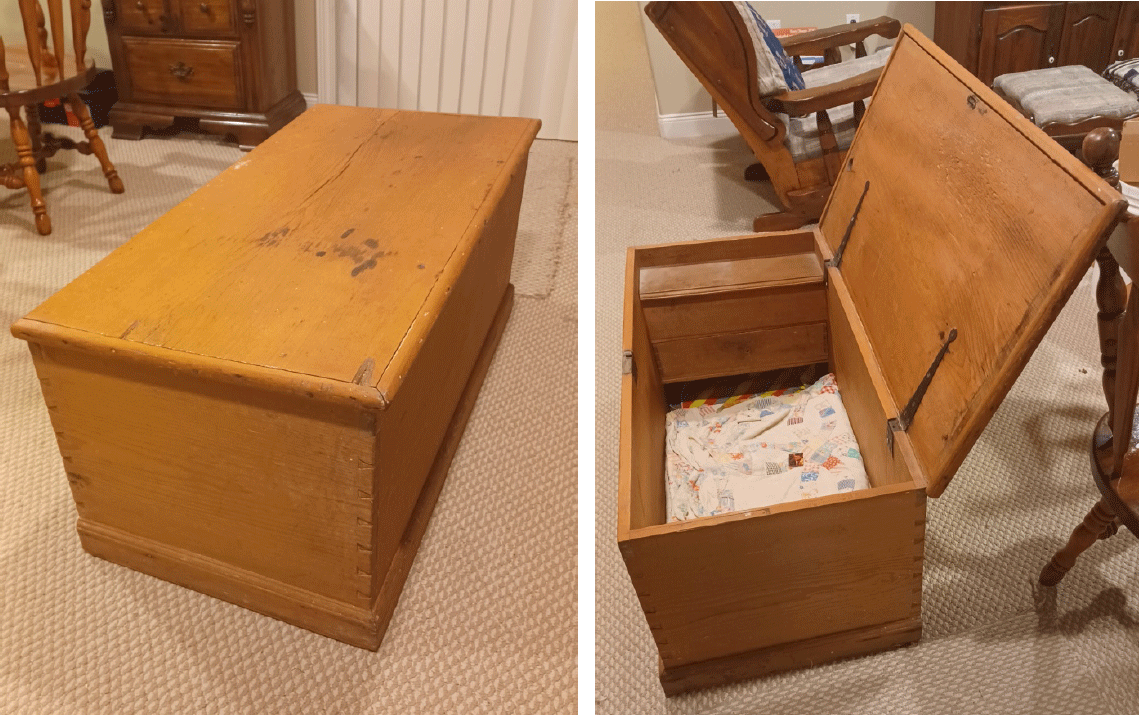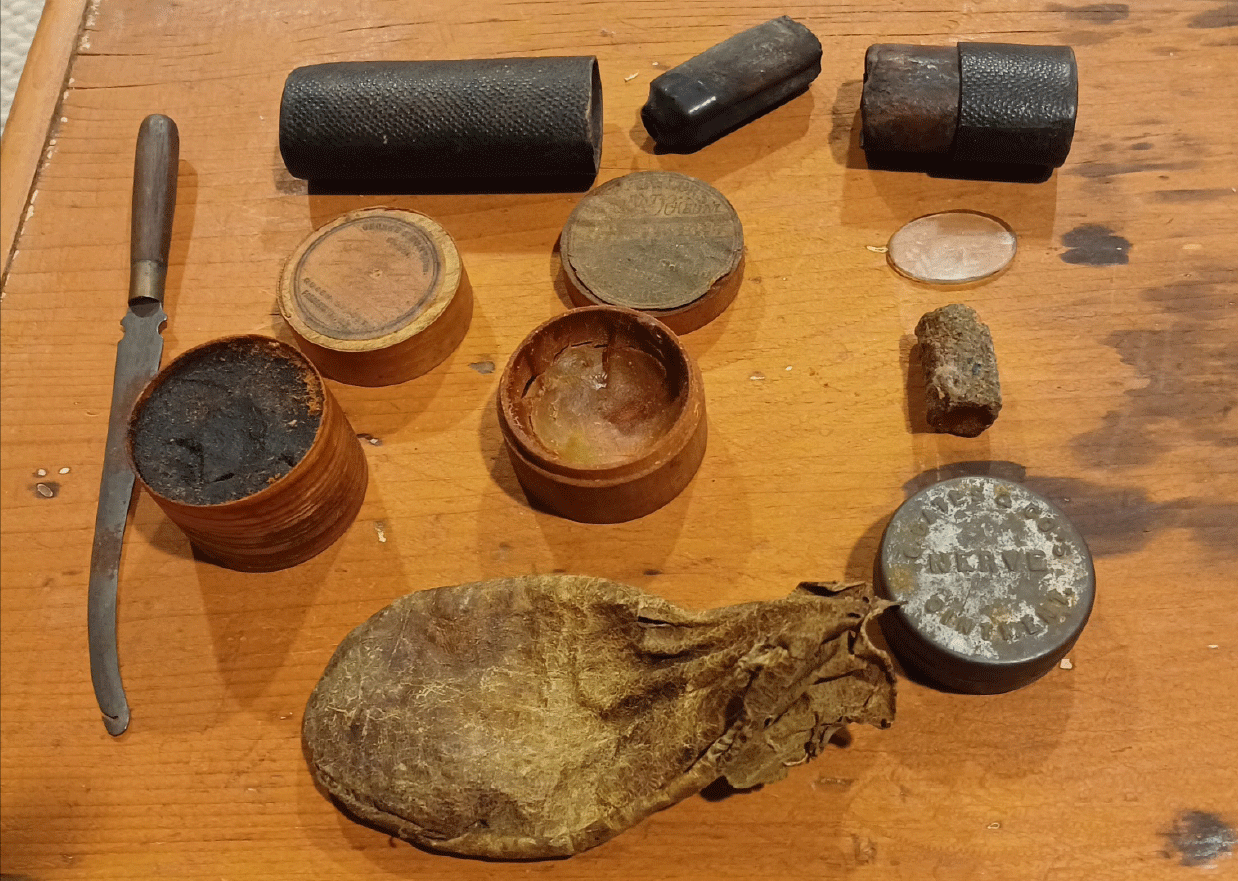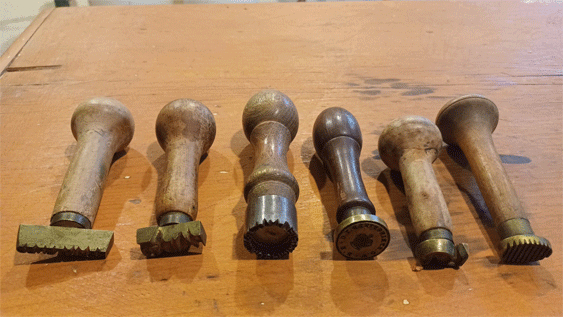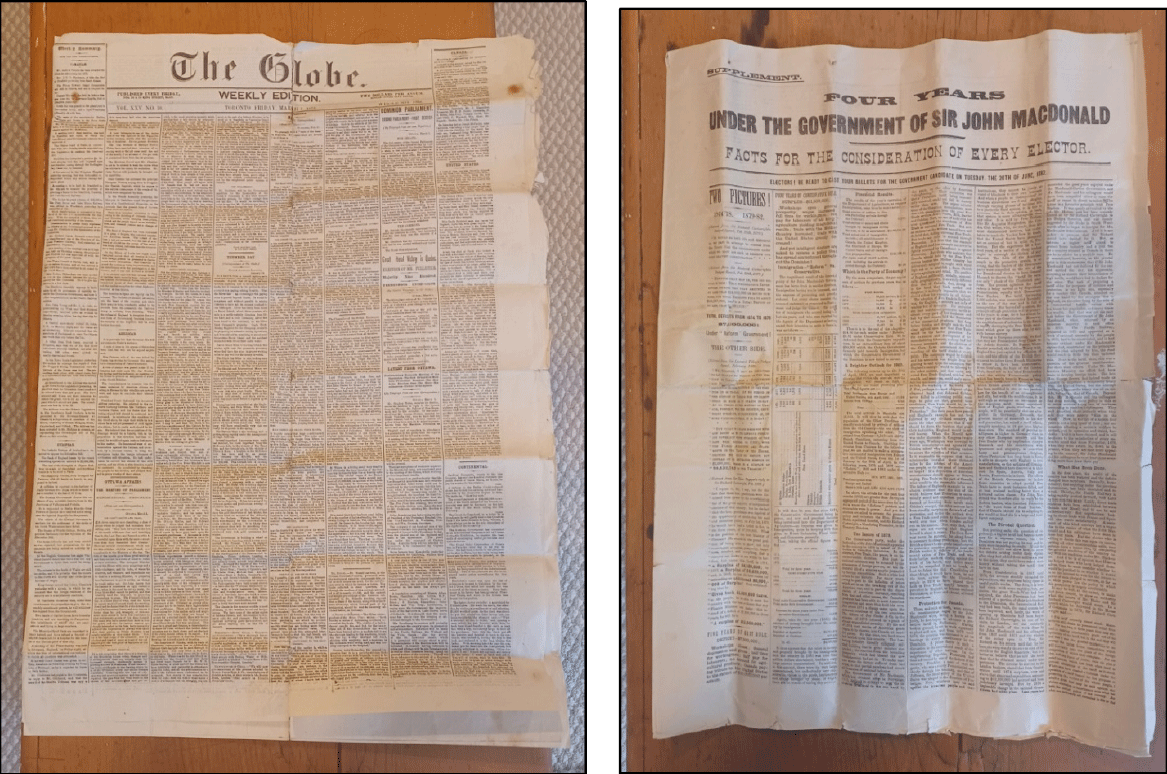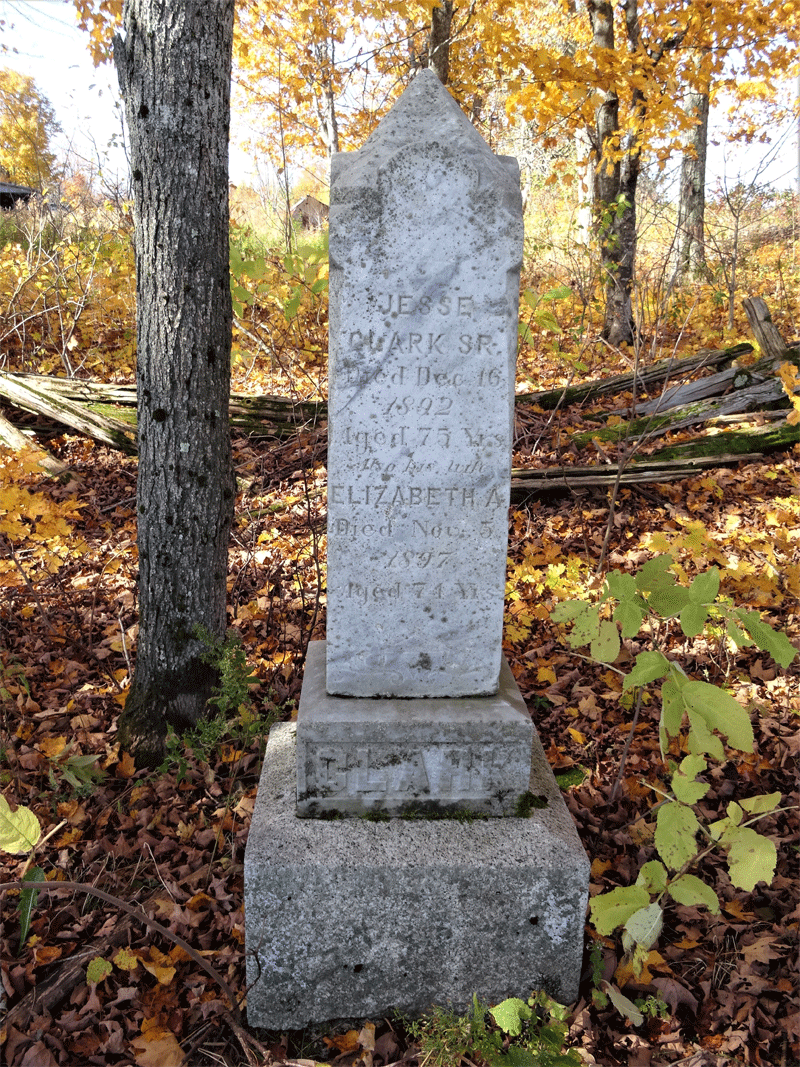
Jesse Clark’s Treasure Chest
When John and Leah Devlin bought the house at 183 Dundonald Street in Fredericton the 1980s, they discovered an old blanket chest in the basement. In it they found a number of old papers dating from the late 1800s, most of which contained the name Jesse Clark. Curious, but unremarkable. But here’s where things get interesting: a hidden compartment was revealed in the chest in 2024, and it contained Postmaster tools and hardware, including six stamps/seals, as well as additional paper documents and receipts, again with the name Jesse Clark, covering the period of 1841 to 1877. This is certainly more remarkable, but it was in discovering who Jesse Clark was, through the thoughtful and thorough research by the Devlins’ son Jake, that we find an astonishingly close connection to our own work in researching and restoring the early period of the post office that operated in our own McKeen Store.
As it turns out, John Jesse Clark was a farmer from Springfield (about ten kilometres southwest of Scotch Settlement) who served as the community’s postmaster from 1868 to 1885 and, apparently, “collected” several postmarks and other items during that time. And from Jake’s research, we know that he and his wife also lived periodically in the Keswick area, as did their grown children.
Now, here’s the really curious part: New Brunswick, as part of the Dominion of Canada, had it’s postal service taken over by the Federal Post Office Department in 1867 (at Confederation). So when and why did Jesse squirrel these away? Post 1867, they would have become government property. Is this why they were in a hidden compartment? For what purpose? Was Jesse a Fenian spy? Or just some kind of philatelistic kleptomaniac? What else do you suppose lurks in Jesse’s past?
While the items are not directly associated with the McKeen store, they do coincide with the early operation there. And even though they have not been properly preserved over the past 150 years, they are in pristine condition, and the KRHS has decided to display them as artifacts similar to those that would have been used in our own post office. The exhibit is still under construction, and we hope to reconstruct a proper postal desk and pigeonholes, and further research the work done at the post office during its operation from 1868 to 1948. You can find detailed descriptions of Jesse’s treasures on our Post Office page, and you’re welcome to dig around yourself to see if you can find anything else he might have stashed away somewhere.
The unassuming house where Jesse Clark's stash was found.
It's just an old chest, right?
Inks, pads, and a pretty menacing letter opener.
People's Exhibit A?
Pages from the weekly edition of The Globe (Toronto) dated May 31, 1871. Left with the items as a historical record?
Jesse and his wife Elizabeth's tombstone in the Clark family cemetery, Springfield, York County, New Brunswick

